Mikhail V. Skopin-Shuisky, Russian military leader of the Time of Troubles
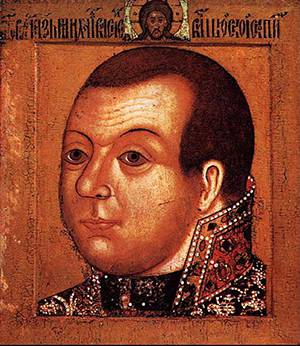
Interstate relations, like people, change little. As soon as the state weakens for some reason, the immediate and distant neighbors immediately recall their complaints, hidden resentment and unrealized fantasies. Whom a neighbor’s crisis suddenly finds itself, one has to compose and formulate one’s requirements already in the process. The fate of those whose once strong arms were bound by weakness is not easy and tragic. Neighbors will not help - unless they take guardianship over the territories for the appropriate fee. And there is nothing to oppose offensive to the arrogant to the audacity of the offenders: instead of infantry columns - flattering letters, instead of armor cavalry - confused ambassadors. And the people may not say their weighty words - they will not notice at all what is happening in high chambers for their work and efforts. And doesn’t it all matter to the simple farmer, under what banner does the cavalry sweep, trampling down the cultivated field with such difficulty, or who are the soldiers who are conducting the revision of uncomplicated peasant belongings? The empires and kingdoms crumble, the crowns and scepters fall into the mud, and only the farmer steadily steps behind the thin horse pulling the plow. But there is a line beyond which the people will no longer be just an observer, a silent extra. And it is good when there are those who will take upon themselves the burden of leading him. Although the power and will end up with those who stood at a distance, shifting from foot to foot. But it will be later.
The time of troubles at the beginning of the seventeenth century in Russia could be called tragic without much exaggeration. A country crumbling in front of our eyes, where the vacant place of any power and order was firmly occupied by stakes and axes, and gangs, resembling the size of an army, and armies marching strikingly similar to gangs marched along the roads. Hunger, ruin and death. It seemed to many that story Russia has come to its hopeless end. For such conclusions were all prerequisites. But everything was done differently. One of those who did not allow the fall of the country into a skillfully dug abyss was Mikhail Skopin-Shuisky.
From an early age in military service
This commander of the Shuisk family, descendants of the Suzdal and Nizhny Novgorod princes, took place. Vasily Shuisky, who lived in the 15th century, had a son, Ivan Osprey, who had patrimonies in the Ryazan region, from which the branch with the double name Skopins-Shuiski was derived. This family gave the country several governors in the 16th century: the son of Osprey, Fyodor Ivanovich Skopin-Shuisky, served for a long time on the troubled southern frontiers, confronting regular Tatar raids. The next representative, the boyar and Prince Vasiliy Skopin-Shuisky, became the successor of the military traditions (the young nobles had no alternative). He fought in Livonia, was one of the leaders of the famous defense of Pskov against the army of Stefan Batory, and in 1584 was appointed governor of Novgorod, which was very honorable for those times. Despite their nobility, members of the Skopina-Shuisky family were not seen in court intrigues and the struggle for power, and they simply did not have enough time for military concerns for this. The repressions and disfavor of Ivan the Terrible bypassed them, and Vasily Fedorovich was even noted in the sovereign's oprichny court.
Mikhail Skopin-Shuisky continued the tradition of serving in the military field. There is little information about his childhood and adolescence. The future commander was born in 1587. Early lost his father - Vasily Fedorovich died in 1595, and his mother, nee Princess Tatev, was raising the boy. According to the traditions of that time, Mikhail was recorded from childhood in the so-called “royal tenants”, one of the categories of service rank in the Russian state. Residents were supposed to live in Moscow and be ready for service and war. They also carried out various official assignments, for example, the delivery of certificates.
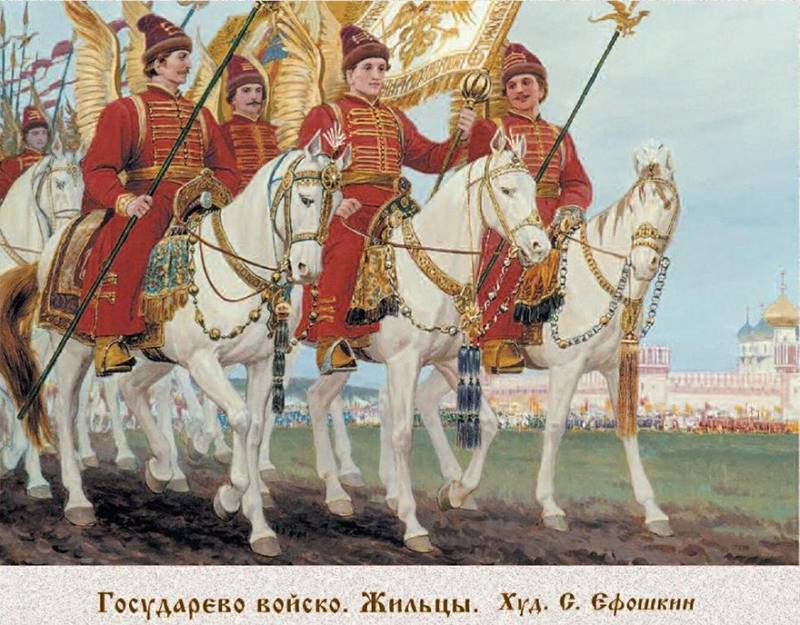
In 1604, Mr. Mikhail Skopin-Shuisky is mentioned as a steward at one of the peers, organized by Boris Godunov. During the reign of False Dmitry I, a young man also remains at the court - it was Mikhail who sent Prince Umlich Dmitry the son of Ivan the Terrible to Uglich to come to Moscow and recognize the False Dmitry as her son. Russia experienced a difficult time. With the death of Fyodor Ivanovich, the Moscow branch of the Rurik dynasty was cut short. Who had enormous personal power and influence during the life of the king, Boris Godunov easily took the vacant place of the monarch. His position did not differ in hardness, in addition, the colossal crop failure caused disaster in the form of famine 1601 – 1603, mass riots and uprisings.
In the midst of October 14, 1604, the western Russian border, along with Polish troops, mercenaries and seekers of gold and adventure, crossed a man who went down in history as False Dmitry I. The character whose personality raises questions today is too complicated and ambiguous. After the death of Boris Godunov and the deposition of his son, the resistance to the impostor is fading away - he is sworn to the army and the city. In 1605, False Dmitry I, to the cheers of the crowd, drives into Moscow. The Board of False Dmitry I was noted not only by attempts to reform the state apparatus and the administrative system, but first and foremost by the extraordinary dominance of foreigners who arrived in the capital along with the “miraculously rescued prince”.
The popular euphoria caused by the arrival of the "true king" and the spontaneous defeat of wine cellars and taverns soon subsided. The Poles and subjects of other monarchs behaved in Moscow in a businesslike manner, without particularly restricting themselves either in behavior or in ways of improving their financial situation. The metropolitan nobility, who had only recently been boldly swearing by an impostor and vying to show their loyalty to him, finally began to think about the consequences and personal perspectives. The latter looked more and more gloomy. As a result, the nobility conspired to overthrow the False Dmitry I, who at that time continued to celebrate the long-awaited wedding with Maria Mnishek. At the head of the upcoming coup, the boyar Prince Vasily Shuisky stood. On the night of 16 on 17 in May 1606, their supporters gathered in the Shuisky compound: boyars, nobles, merchants. Present here and the young Skopin-Shuisky. About a thousand Novgorod nobles and battle slaves arrived in the city. Moscow bells struck the alarm, a crowd of people armed with anything, rushed to the Kremlin. Her energy was redirected by the conspirators to the Poles, they say, "Lithuania wants to kill the boyars and the king." Throughout the city began the massacre of the long-annoying all Poles.
While the hardened people were exterminating the foreigners, who, according to the obvious naivete, considered themselves masters of the Muscovites, the conspirators seized and killed the False Dmitry. Vasily Shuisky ascended to the throne. After that, the life and career of Mikhail Skopin-Shuisky underwent significant changes. And not because of even distant, but family ties. Contemporaries, primarily foreigners, who communicated with Skopin-Shuisky, describe him as a clever man, sensible not for years, and above all knowledgeable in military affairs. Mikhail Vasilyevich himself did not leave descendants any notes, or memories, or any other written sources about himself. His short life was entirely devoted to military and state affairs, which was the same thing in the conditions of Russia at the beginning of the seventeenth century.
Against the Troubles of the inside
Rumors that the "prince", or rather, the king miraculously escaped, began to spread again among the population the next day after his murder. Even the demonstration of a tortured body for several days did not help. Cities and entire regions began to emerge from centralized subordination to Moscow. A large-scale uprising began under the leadership of Ivan Bolotnikov, in terms of scope and number of participants, more like a civil war. The rebel army of many thousands, which even had artillery, moved to Moscow. Government troops sent to meet Bolotnikov were defeated.
On the instructions of Tsar Vasily Skopin-Shuisky, together with the boyar Boris Tatev, at the head of the new army were sent to block the rebels the shortest path to the capital. In the autumn of 1606, a stubborn and bloody battle took place on the Pakhra River - Skopin-Shuisky managed to force Bolotnikov to retreat and move to Moscow in a longer way. Nevertheless, the rebels laid siege to the capital. Skopin-Shuisky is located in the city and receives the assignment of the outgoing governor, that is, its function was to organize and carry out sallies outside the fortress walls. The prince distinguished himself during the big battle in December of 1606, as a result of which Bolotnikov was forced to lift the siege and retreat to Kaluga. The actions of the young governor were so successful that he was appointed commander of the whole army advancing to Tula, where the rebels retreated from Kaluga.
In mid-July, on the outskirts of this city, a major battle took place between the tsarist troops and the rioters. This time, Bolotnikov took a defensive position behind the Voronya River, whose swampy shores were a reliable defense against noble cavalry, in addition, the rebels built numerous abutments. The battle lasted three days - numerous cavalry attacks were repulsed by the defenders, and only when the archers were able to force the river and dismantle part of it, the outcome of the battle became definite. Both sides suffered significant losses, Bolotnikov retreated to Tula, which he decided to defend to the last possible.
Numerous troops were pulled to the city, Vasily Shuisky himself arrived at the camp. The siege was lengthy and cost the parties great sacrifices. While some Russians were killing others, on the Seversk side, in the town of Starodub, a new danger appeared. Rumors about the rescue of False Dmitriy persistently exaggerated among the people. And not just rumors. The ranks of the “miraculously saved princes” were steadily replenished with new members and significantly exceeded the modest society of children of a later known lieutenant in number. Most of the “princes” ended their careers in the cellars of the local governors and governors or in the nearest taverns. And only some were destined to make history.
The man, better known as False Dmitry II, was able to convince the old-timers of his authenticity. A big role was played by letters of appropriate content with calls to go to Moscow, where "there will be much good." The False Dmitry II behaved confidently, gave out promises a lot and promised his supporters great benefits. From Poland and Lithuania, sensing the possibility of weighing up skinny wallets, various adventurers, poor gentry and other personalities without special rules flowed. From under Tula from Bolotnikov, the delegate arrived, ataman Zarutsky, who recognized the “real king” in False Dmitry II, for which he was introduced into the pocket “boyar duma” sitting at Starodub. In September, 1607, he began active operations. Bryansk greeted the impostor with a bell ringing, Kozelsk, where large prey was taken - taken by storm. With the first successes, supporters began to flock to the False Dmitry. Vasily Shuisky, who was under the besieged Tula, did not at first attach importance to the appearance of the next “son of Ivan the Terrible”, and then left without attention the regional problem quickly turned into a state one. Tula, finally, was taken after a difficult and stubborn siege, but ahead was the struggle with an impostor, whose appearance more and more resembled foreign intervention.
For successful activity during the siege of Tula, the king granted Boyar rank to Mikhail Skopin-Shuisky. All winter 1607 – 1608 he spends in Moscow, where he marries Alexander Golovina. Soon Tsar Vasily Shuisky himself marries, and at the wedding Mikhail was among the honored guests. However, the time of the festivities quickly came to an end - the strengthened False Dmitry II in the spring of 1608 began to take active steps. Tsar's brother Dmitry Shuisky was sent to meet him with the 30-thousandth army. In April, a two-day battle took place near Bolkhov, in which government forces were defeated. The incompetence and cowardice of Dmitry Shuisky led to defeat, the loss of all artillery and almost all of the convoy. After the victory, many cities have gone over to the side of the impostor.
The king was forced to send a new army, which is now headed by Skopin-Shuya. The instructions given to him said that the enemy must be met on the Kaluga road, on which the army of False Dmitry allegedly moves. However, this information turned out to be incorrect. The army took up positions on the banks of the Neznan River between the cities of Podolsk and Zvenigorod. However, it turned out that the enemy was moving further south, following another path. There was an opportunity to strike at the flank and rear of the impostor, but then new difficulties arose. In the army itself began ferment on the topic of joining the "true king." Part of the boyars was not opposed to participate in the conspiracy and was in the transition from theory to practice. In such difficult circumstances Skopin-Shusky showed the will and character - the plot was strangled in the bud, the perpetrators were sent to Moscow.
Soon the order from the king came back from the capital. Vasily Shuisky felt the precariousness of his position and wanted to have at hand armed force. A false Dmitrii rather successfully approached Moscow, but he did not have the forces and means for the siege of such a large and well-fortified city. After maneuvering around for some time, the impostor, with the help of his numerous Polish advisers and strategists, chose the village of Tushino as the main base. A stalemate has developed to some extent: the Tushians could not take Moscow, and Shuisky did not have enough power to eliminate the wasp's nest that had grown in size. It was necessary to seek help in other parts of the country, especially in the not yet ruined lands of Novgorod. For this difficult and dangerous mission, the king chose the most trusted, brave and talented person. This man was Mikhail Skopin-Shuisky.
On North
Detachments of Tushino and just gangs of various sizes and nationalities operated in abundance around Moscow itself. In fact, regular communication with other regions of the country was interrupted. There was no definite information as to which city remained faithful and which was deposited. The Skopin-Shuisky mission had to make its way to Novgorod by deaf forest paths, without looking especially to anyone. Time was running out - one of the “field commanders” of the impostor, Jan Sapega, captured Rostov, and Astrakhan and Pskov recognized the power of the False Dmitry. Upon arrival in Novgorod, Skopin-Shuisky received information that the situation in the city was not stable. It became known about the transition to the side of the impostor Pskov and Ivangorod. Fearing an open insurrection, Novgorod voivode Mikhail Tatishchev insisted on leaving Novgorod. Having heeded the admonitions of the governor, September 8 1608 Skopin-Shuisky left the city.
Soon there really began riots: supporters of the central government and the impostor fought among themselves. In the end, the government party won and Skopin-Shuisky, located near the Nut, was sent a delegation with an expression of loyalty and loyalty to the king. The voivod returned to the city already as the sovereign representative of the king, very soon he will actually become the head of the entire Russian north. The danger was quickly realized in Tushino, and a Polish colonel Kerzonitsky was sent to Novgorod with a four-thousand detachment. Having trampled near the city for two months and completely devastated the neighborhood, the Tushino residents were forced in January 1609 to roll up and move away.
The rati from other cities were drawn up to Novgorod, and people who were tired of the foreign lawlessness that was happening in the country also came. In fact, in the center of Russia only Moscow was under the authority of the tsar, and entire regions either recognized the impostor as tsar, or were close to it. However, the intense activity of the organization in Tushino had an impact and made an impression more than a pile of royal letters with calls to fight the impostor. The accomplices of False Dmitry did not disdain the dirtiest and bloody acts, and on a massive scale. Little by little, even among the most enthusiastic supporters of the next “prince”, the enthusiastic veil began to disappear from the eyes, for the benefit of which the Tushinois tried for this purpose on a grand scale. Cases of armed resistance to the interventionists and marauders have become more frequent - more and more often the gangs saw in front of themselves not in fear of the fleeing peasants and their screaming wives, but of armed militias. Already in the fall of 1608, the reverse process begins. Representatives of the impostor begin to drive out from many cities and villages.
In Novgorod, Skopin-Shuisky had to solve a very difficult task. Indeed, the uprising against the hated impostor and his European patrons and accomplices has spread, the number of people who are ready to take on weapon. However, these were still scattered detachments, loose, poorly armed, and poorly organized. They just had to become an army. By the spring of 1609, out of available human resources, Skopin-Shuisky was able to organize, form, and bring to a combat-ready state a five-thousand amy. Gradually, Novgorod became the center of resistance to the impostor and foreign intervention. From February 1609, representatives of the royal power were sent to the insurgent cities along with armed detachments, thus, control over spontaneous demonstrations on the ground was concentrated in the hands of Skopin-Shuisky and became more and more organized.
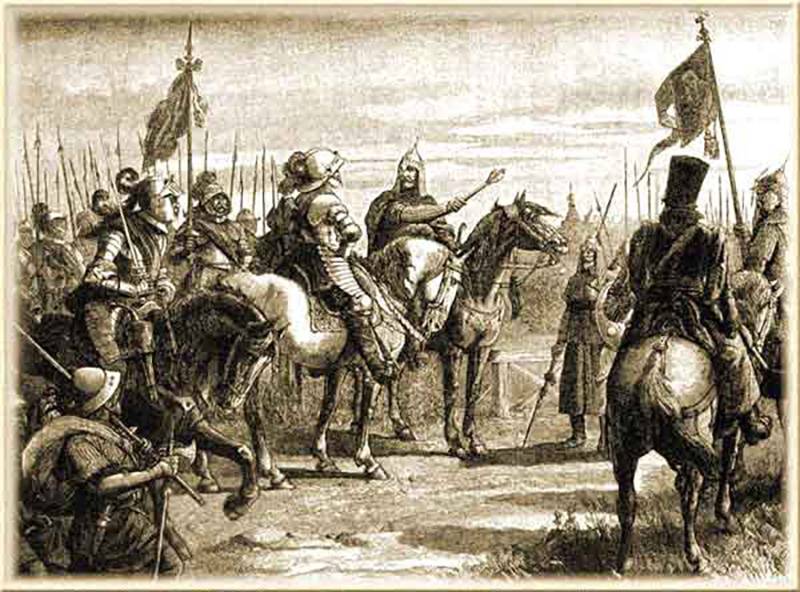
The problem was that the voivode still did not have a large and well-trained army to give the enemy a battle in the field. Cash forces enough for the defense of Novgorod, but no more. Then Tsar Vasily authorized Skopin-Shuisky to negotiate with representatives of Sweden in order to attract his army to fight against the impostor and the Poles. 28 February 1609 in Vyborg signed a Russian-Swedish agreement, according to which the Swedes pledged to directly subordinate Skopin-Shuisky 15-thousandth army for an impressive amount of one hundred thousand rubles a month. In addition, Russia ceded Korela to Sweden with the county. In early March, the Swedish army, consisting mostly of European mercenaries under the command of Jacob Delagardi, entered the borders of Russia. From the very beginning, Delagardi acted unhurriedly, dragged out time, demanded an advance and provisions. Only the perseverance and strength of Skopin-Shuisky's character, combined with a certain amount of specie, made the Allies do more productive work than bivouac entertainment. The avant-garde of the Russian-Swedish army in May marched to Staraya Russa and soon mastered it.
To Moscow
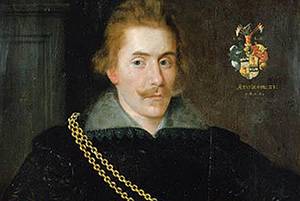
10 May 1609 from Novgorod were the main forces under the command of Skopin-Shuisky, while the Swedes also left their camp. The Russian army marched in the direction of Torzhok along the Moscow road, Delagardi was moving through Russa. 6 Jun both armies united. The value of the conveniently located Torzhok was understood by both Russians and Tushians. In order to prevent further advance of Skopin-Shuisky’s troops, Pan Zborovsky’s troops were sent to Torzhok, who, after infusing other units operating in the area into their army, eventually had 13 thousand infantry and cavalry. Intelligence on time informed the command of the actions of the Poles, and reinforcements were sent to Torzhok - Russian warriors and German infantry Everta Horn.
17 June 1609 a battle took place near the city walls, in which 5 – 6 thousand people took part on each side - Mr. Zborowski started the case with the traditional attack of the Polish heavy cavalry, which, however, choked, hitting the dense structure of German mercenaries. However, the Poles managed to crush the Russian and Swedish cavalry standing on the flanks and drive them to the fortress walls. Only a bold attack of the garrison Torzhok was able to neutralize this success of the enemy, and he retreated. Ban Zborowski declared the battle of Torzhok his victory, after which he quickly retreated to Tver. He did not fulfill the assigned task - the offensive of the Russian-Swedish troops continued, Torzhok failed to repel.
On June 27, the entire Skopin-Shuisky army was concentrated in Torzhok, where it was reorganized into three regiments - a large, advanced and sentry. Foreign mercenaries were no longer one large contingent, but were evenly distributed between the regiments and were under the command of the Russian commanders. The next goal was Tver. The army left Torzhok on July 7, and July 11 crossed the Volga about ten versts from Tver. The invaders also concentrated their forces in the area of the city: the same pan Zborovsky had 8 – 10 thousand people there who stood in fortified positions near the walls of Tver.
The idea of Skopin-Shuisky was to cut off the enemy from the fortress walls, press them against the Volga and defeat them. But Zborowski attacked first, using his excellent heavy cavalry. And again, the Poles managed to disperse the Russian and Swedish cavalry, which was intended for a cutting blow. The cavalry attacks against the infantry in the center did not bring Zborovsky success - the battle lasted more than 7 hours, the Poles and Tushino returned to their camp. 12 July both armies put themselves in order.
The battle resumed on July 13. The Allied infantry managed to break the stubborn resistance of the enemy and break into its fortified camp. Decisive success brought a blow to the reserve - Skopin-Shuisky personally led the attack. Zborowski's army was overturned and fled. She suffered great losses, numerous trophies were captured. The victory was complete. However, a foreign factor came into play. Delagardi mercenaries did not show much interest in the further march into the depths of Russia, some of them insisted on an immediate assault on Tver, hoping to get more booty. Since the army did not have siege artillery, the first attacks were regularly repulsed. Leaving the foreign contingent to smash their heads against the walls of Tver, Skopin-Shuisky marched with the Russian part of the army to Moscow.
Not reaching 150 km before the capital, the voivode was forced to return. First, information was received that Zborovsky, who was covering up the road to Moscow, received considerable reinforcements, and soon hetman Jan Sapega approached him, taking command of himself. Secondly, it became known that the mercenaries camped near Tver rebelled. Returning under the walls of Tver, the voivode found a complete disintegration of the foreign contingent, demanding money, mining and returning home. Delagardi could not, and did not particularly like to cope with the situation. Realizing that he can now only rely on himself, the voivode of 22 July left the camp near Tver and, having crossed the Volga, moved to Kalyazin. Only one thousand Swedes performed with him. The camp near Tver was actually disintegrated - only Delagardi, faithful to the instructions of the Swedish king, retreated to Valdai from 2 thousand soldiers, covering the road to Novgorod. The Swedes strongly wanted to get their money owed to the Korela contract.
New Army, New Victories
24 July 1609 Russians entered Kalyazin. Since the troops for the field battle were now not enough, the commander ordered the field camp to be well strengthened, having secured him from sudden attacks. Reinforcements came to him from different sides, and by August, according to the Poles, Skopin-Shuisky had at least 20 thousand people. In Tushino, they could not disregard this, and 14 of August near Kalyazin became the camp of Jan Sapega with 15 – 18 thousand soldiers. The cavalry interventionists had an overwhelming superiority, both in quantity and quality.
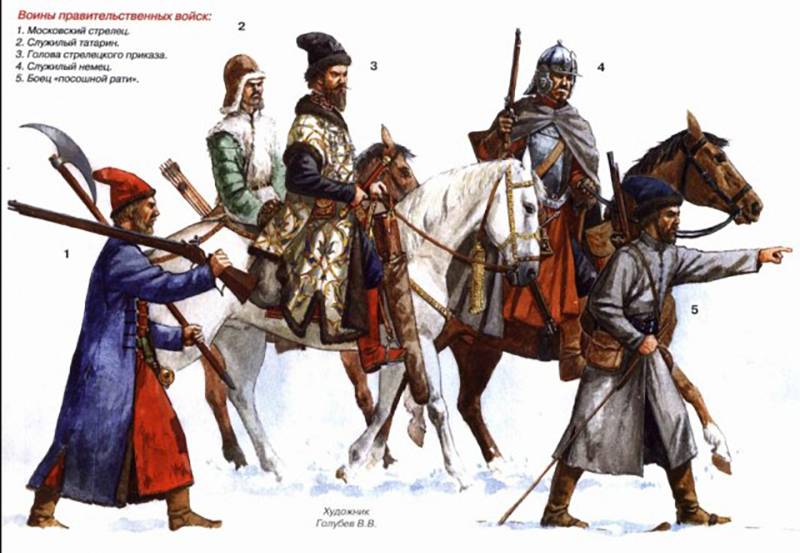
18 August Poles went on the attack on the Russian position. Initially, heavy cavalry leaned on the camp fortifications over and over again, then infantry took its place. Russian defense could not shake or lure the defenders because of the fortifications. Jan Sapega, being an experienced commander, decided to use a workaround. On the night of August 19, enemy infantry began to cross the Zhabnu River to deliver a sudden blow to the rear of the defenders. However, Skopin-Shuisky foresaw such a maneuver of the Poles, and, as soon as the sentinel in advance reported the appearance of the enemy, threw his best troops against him. The sudden blow was a complete surprise to the Poles - so they were confident that they managed to sneak in secret. They were overturned, crossed Zhabnyu and drove to the camp. Only the intervention of the Polish cavalry saved Sapieha from complete defeat. Sapieha was forced to retreat to Pereslavl-Zalessky.
In the battle of Kalyazin the Russians proved the possibility of victory without the large-scale participation of foreign mercenaries. However, Skopin-Shuisky still had much to do in order to turn his brave, but not sufficiently trained army into a strong modern army. The basis was taken so-called. "Dutch tactics", which was owned by Delagardi, who fought in the Netherlands. Russian soldiers were taught not only the handling of weapons, but also exercises in the ranks. Much attention was paid to the erection of field woodland fortifications instead of the traditional walking-city. Skopin-Shuisky developed vigorous activity on the financial side of the matter: he sent convincing letters to cities and monasteries, from where he began to send cash donations and payments to the army. In late September, the Swedes returned to the camp near Kalyazin under the command of Delagardi - Tsar Vasily confirmed his decision to transfer Korela. The combat readiness and strength of the Russian army were at their best, which made it possible to begin the autumn campaign.
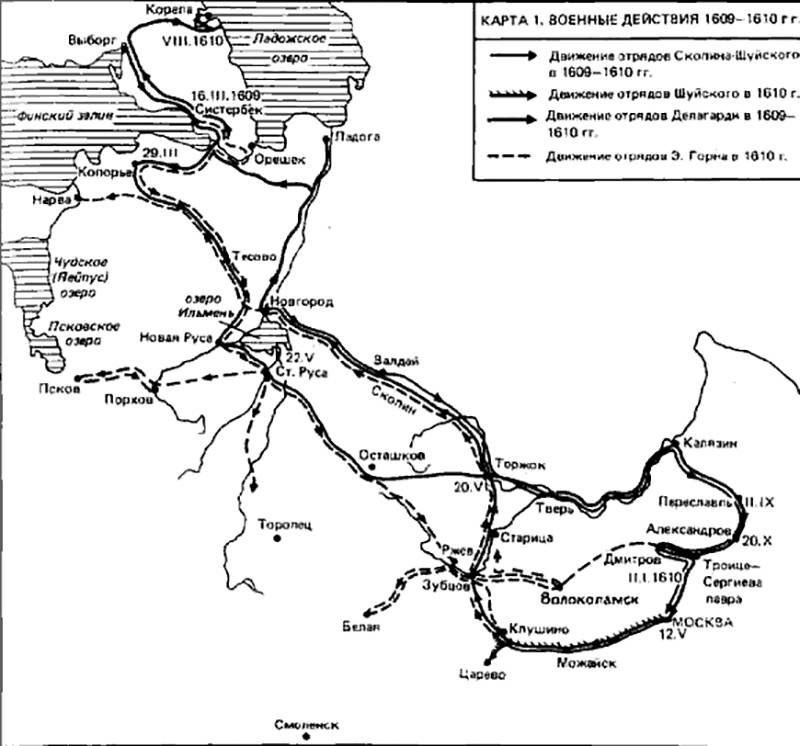
October 6 1609 Skopin-Shuisky freed Pereslavl-Zalessky from Tushino, October 10 entered Alexander settlement. The active actions of the Russian forced the enemy to think about the consequences and take action. On October 27, Jan Sapieha appeared at Aleksandrovskaya Sloboda with 10 thousand troops, and on October 28 a battle took place. And again, the Poles attacked the Russian fortified camp - each time with increasing losses. Russian archers fired at them because of fortifications, and the Russian cavalry attacked a quivering enemy. The victory brought Skopin-Shuisky popularity not only in the military and popular environment. Some boyars began to express the idea that such a person was more worthy of the royal throne than Vasily, who had locked himself up in Moscow. The prince was a man of great modesty and stopped such conversations and sentences.
Battle Way Final
The successes of the Russian army responded not only in Moscow, but also in Tushino. Taking advantage of the agreement between Russia and Sweden as a pretext, the Polish king Sigismund III in the fall of 1609 declared war on the king. False Dmitry II became more and more decorative figure, the need for it became less and less. A disorder began in Tushin, an impostor was forced to flee to Kaluga. Skopin-Shuisky did not weaken the onslaught, forcing Sapieha, after a series of battles, to remove the 12 of January 1610 from the siege of the Trinity-Sergius Monastery and retreat to Dmitrov. The threat to Moscow has been eliminated.
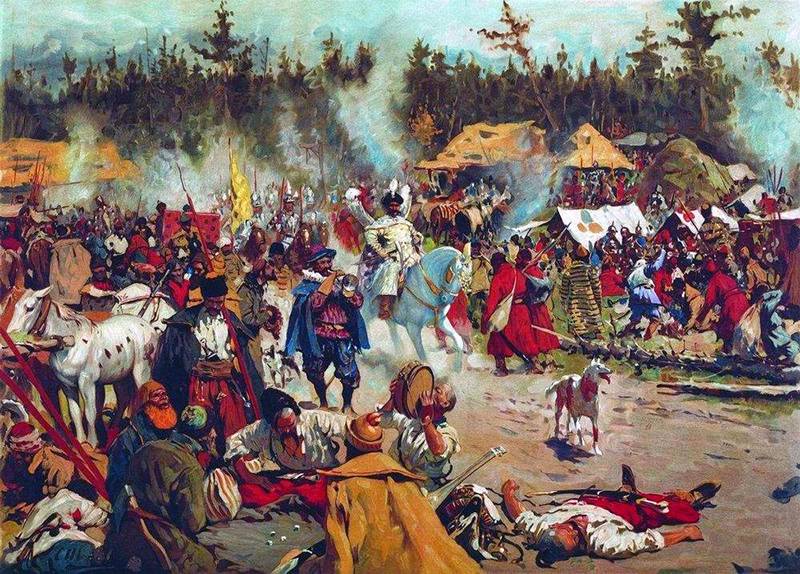
The Russian army began the blockade of Dmitrov. February 20 managed to lure some of the Poles into the field and smash them. The situation of Sapieha became increasingly difficult, and 27 in February, destroying heavy artillery and ordering the city to be set on fire, the remnants of the Polish army left Dmitrov and moved to join up with King Sigismund III. 6 March 1610. The Tushino camp ceased to exist, and on March 12, the Russian army triumphantly entered Moscow.
They met Skopin-Shuisky solemnly and with honors. The king in words lavished courtesy, and in fact frankly feared the enormous popularity of his nephew. Glory did not turn the voivode's head - he was seriously preparing for the spring campaign against King Sigismund, he regularly conducted exercises. Jacob Delagardi strongly advised his commander to quickly move out of the city, since he would be safer in the army than in the capital. The end came faster: at a feast on the occasion of the christening of the son of Prince Ivan Vorotynsky, Skopin-Shuisky drank a cup, offered to him by the wife of the Tsar's brother, Dmitry Shuisky. Her name was Catherine, she was the daughter of Malyuta Skuratov. After that, the commander felt bad, he was taken home, where he died after two weeks of torment. According to another version, the prince died of fever, and the story of poisoning was the fruit of idle speculation, given his popularity.
Anyway, Russia lost its best at that time commander, and soon it affected most adversely. The clouds of great troubles, which began to disperse, again thickened over Russia. It took years more and incredible efforts to drive the invaders and interventionists out of the borders of the Fatherland.
Information